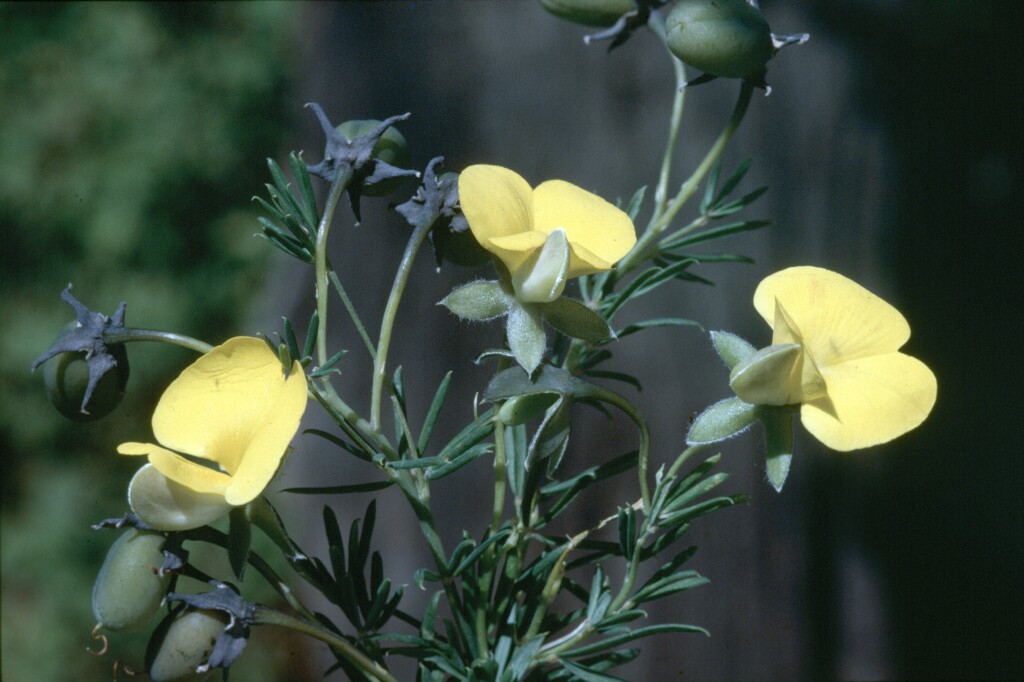Gompholobium huegelii
Benth. Common Wedge-peaErect or spreading shrub, to c. 1 m tall; stems more or less glabrous, smooth or tuberculate. Leaves shortly petiolate, trifoliolate; leaflets linear to oblanceolate, mostly 5–20 mm long, 0.5–2 mm wide, subsessile, glabrous, margins revolute; stipules minute, bristly. Flowers 15–20 mm long, solitary or few in terminal racemes; pedicel to c. 15 mm long, often appearing longer due to bud or flower drop. Calyx to c. 10 mm long, dark green to black, glabrous outside; lobes valvate, triangular-lanceolate, acute, nearly reaching base of calyx, not ridged at edges, inside margins tomentose; petals yellow, often with greenish markings; keel densely ciliate along edges, hairs to 0.5 mm long; ovules 12–20. Pod ovoid, to 15 mm long, to 10 mm wide, turgid, glabrous, stipitate; seeds numerous, reniform, to c. 3 mm long, light-brown. Flowers Sep.–Apr.
LoM, Wim, GleP, VVP, VRiv, GipP, OtP, WaP, Gold, CVU, GGr, DunT, NIS, EGL, EGU, WPro, HSF, HNF, OtR, Strz, MonT, HFE, VAlp. Also NSW, Tas. Scattered widely across higher rainfall parts of Victoria and often locally common. Found in heathland and dry sclerophyll forests, often on sandy or gravelly soils.
Very variable species particularly in terms of leaflet size and shape and flower and calyx sizes. Some specimens from the north-east of Victoria (e.g. from Benalla, Granya, Chiltern, Greta South) approach G. latifolium in flower and calyx sizes but have shorter, narrower leaflets like those of G. huegelii.
Jeanes, J.A. (1996). Fabaceae. In: Walsh, N.G.; Entwisle, T.J., Flora of Victoria Vol. 3, Dicotyledons Winteraceae to Myrtaceae, pp. 663–829. Inkata Press, Melbourne.
 Spinning
Spinning
